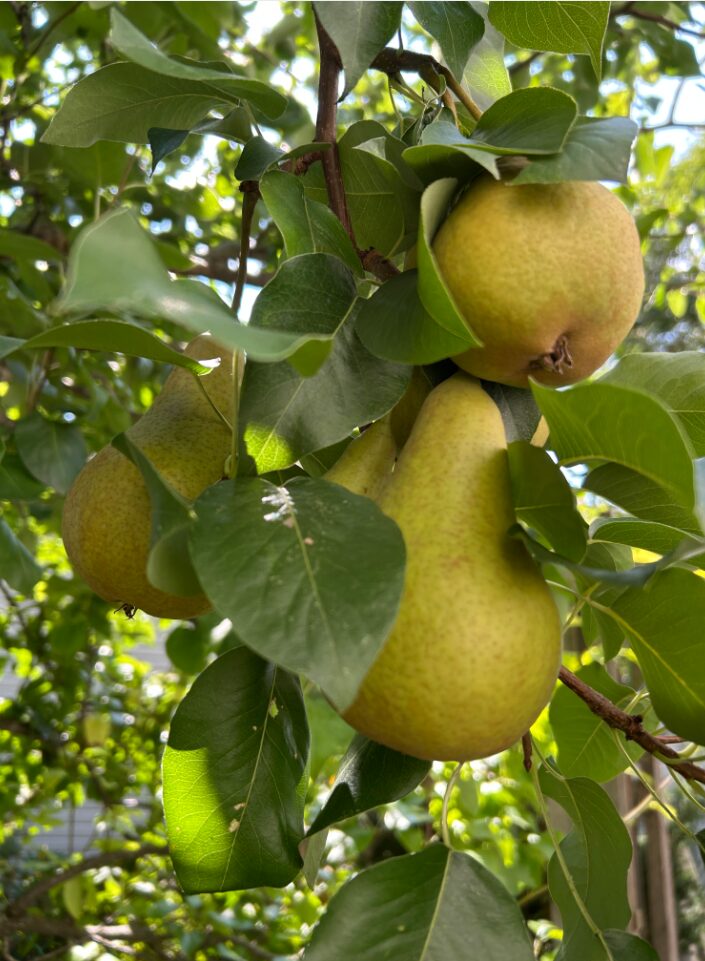Adaption is Survival
By: John Towndrow, Chair, Transition Cornwall+
“Adapt or perish, now as ever, is nature’s inexorable imperative.” – H.G Wells
Two wise voices help us to face the inevitable truth that even if we completely stopped burning fossil fuels tomorrow, we would still need to adapt to the climate change already baked into our world.
As mentioned last month, the key climate risks with us right now are: Extreme heat; Invasives like exotic plants, pests and disease; Flooding and Storms. You will note that these risks are all nature based, so we must look largely to nature to help us adapt, whether you are an individual, a business or an institution.
Extreme Heat
A most obvious action is to plant more trees and a diversity of trees. Even one tree, whether on your property, business or on the street can have a dramatic effect. A single mature tree can
provide significant cooling. This process works by using energy from the sun to evaporate water, and a city block with adequate tree cover can be up to12∘C cooler than areas without trees.
Check any parking lot in summer and the shaded spots will all be taken first as we all know this cooling effect intuitively.
On a hot day take a barefoot walk on an asphalt driveway and then on a lawn or even a light-coloured walkway and you will notice a massive difference. On any new project find ways to
minimize the total amount of pavement or remove it. Also, use light colour pavement wherever possible as it reflects rather than absorbs heat. For example, the practice of applying black
sealer to your driveway not only spreads toxic material but also increases heat absorption.
Invasives like exotic plants, pests and disease
Wherever you can have an influence, plant as diverse a mix of native plants as possible. (It’s called biodiversity) Replace vast lawns around industrial sites with woodlands or native grasses. These landscapes attract birds and other creatures that will dine on ticks and mosquitoes. You can also join in community efforts to remove exotic plants like Phragmites and Buckthorn.
Flooding
Multiple solutions are available. Add water barrels to your downspouts and direct the downspouts away from the house. Reduce mowing large areas of grass that you don’t use and
allow naturalization. Plant trees and replace your lawn area with ground covers, perennials or shrubs as they all absorb so much more water during downpours.
New commercial businesses are now usually required to install retention and soak away ponds to retain excess rainfall. (E.g. Walmart) I have noticed a trend to use river rock instead of grass or plants around commercial buildings even to the exclusion of trees. This practice is intended to reduce maintenance, and is indeed better than paving, but it creates little heat islands so more demand for air conditioning in the building and can look very stark and uninviting.
There are vast paved areas in places like shopping malls and school yards. An honest assessment of the parking requirements would likely lead to a reduction of pavement with its accompanying floodwater runoff and an opportunity to replace some pavement with green islands and trees.
Storms
Many people cut down trees unnecessarily out of fear. Ask a certified arborist for an assessment of the trees on your property. Some may present a hazard such as a dying ash tree
or large tree with damaged limbs but for the most part trees can withstand storms. Plant large trees where space is not limited.
The city’s overall tree canopy is important to buffer the effects of storms and there is an ongoing effort on the part of the city to plant tree species that can withstand severe storms.
Each of these actions may seem minor but all are needed to reduce the effects of severe weather events. Every small action adds up to a worldwide effort.
Let’s all do our part.


I’d love to have your feedback on these monthly articles. Contact me at transitioncornwallarea @gmail.com



